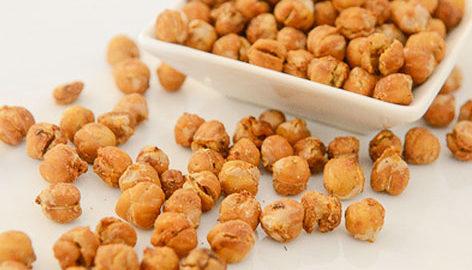In India, the sand roasting technique is widely used by street food vendors, villagers and cottage industries for making various value-added food products from different cereals, millets and legumes. The traditionally produced sand-roasted products are commonly utilized as ready to eat snacks or for the preparation of various other snacks.
The techniques of sand roasting and baking are gaining importance as cheap, effective, oil-free, healthier ways of cooking. However, further studies are needed on micronutrient availability and functional food development for community nutritional disorders. Also, the residual silica levels and difficult working environment mandates the development of energy-efficient and high-output-orientated technologies such as continuous, microwave, and fluidized bed roasters.
In terms of health benefits, minimally processed foods are better than the processed foods. Among the minimal processes, sand roasting is a traditional, rapid food processing method which utilizes dry heat for a shorter span of time. In this high-temperature short-time treatment, the heat energy is transferred via conduction. The sand roasting causes faster dehydration, characteristic thermal and chemical reactions, and reduction in water activity of the grains. During roasting, the far infrared rays produced from the sand penetrate the grains and aid in breaking down of the starch, protein, and fats in the grains.
The cereals belong to the family Graminaceae and include rice, wheat, maize, barley, oat, and rye. They are the important carbohydrate resources, in addition to minerals, dietary fiber, and bioactive compounds. The different methods such as conventional dry heating, sand roasting, hot-air popping, gun puffing, microwave heating are used for producing value-added cereals with distinctive aroma and taste.
Sand Roasting of Rice
Among the cereal crops, rice occupies a key position as a major cereal crop and staple food in human nutrition due to its texture, taste, and nutritional qualities. There are vast number of paddy varieties grown in different states of India which are suited for raw milling, parboiling, and value-added rice products. In India, around 10% of the production is used for making value-added rice products such as popped, puffed, and flaked rice.
Popped Rice
It is known as pelalu, khoi, etc. in various Indian languages. It is a traditional value-added product with high cold water swelling capacity originated from raw paddy; arising from high starch gelatinization and low retro gradation. It is prepared directly by high-temperature short-time treatment from the moisture-adjusted raw paddy by sand roasting in a pan at a temperature of 150–250 °C for 25–45 s.
Puffed Rice
It is known as maramaralu, murmura, murra, muri, puri, borugulu, mandakki, kallepuri, etc. in various Indian languages. It is one of the popular, common, oldest minimally processed food items especially used as snack, ready to eat breakfast cereal, infant food, etc. in India. It is also distributed as prasadam to devotees in temples and gurudwaras. It is mostly produced in home or cottage industries by skilled artisans using the cheaply available local material, sand as a heat transfer medium for the uniform distribution of temperature among the grains.
Flaked Rice
It is also known as rice flakes, parched rice, flattened rice, and beaten rice in English and atukulu, avalakki, aval, poha, chura, chira, chiwada, etc. in various Indian languages. It is one of the oldest traditional rice product which is consumed as a cereal breakfast and sweet or salty snack either by toasting, roasting, frying, spicing, or soaking in water, milk, and seasoning with vegetables and spices in India. It is a flattened, carbohydrate rich, edible, precooked, rice product produced by soaking the paddy, sand roasting, and flattening.
Sand Roasting of Maize
Popcorn is the most important, popular commercial snack produced worldwide from corn. It is available in small packs, coated with various ingredients such as hydrogenated oil, sugar syrup, salt, β-carotene, favors, etc. for improving the sensory quality. There are various corn-popping methods are available including conventional sand roasting, gun popping, hot-air popping, and microwave popping. Among which, the microwave and pressure cooker popping are the most popular methods at households due to energy-efficiency and short time. The popping of maize depends on corn variety; kernel size, shape, and density; pericarp thickness; moisture content (11-16%); popping temperature; and popping method.
There are many more products and different types of sand roasting techniques:
- Sand roasting of barley
- Sand roasting of oats and wheat
- Sand roasting of millets
- Sand roasting of groundnut fruits and seed kernels
- Sand roasting of chickpea, cowpea, pea, black gram, and kidney beans
- Sand roasting of other food items
- Sand baking of vegetables, eggs, meat, and cake
The limitations of the sand roasting technique are lack of temperature control, uneven temperature distribution and sand contamination in the final products. The sand roasting method is energy inefficient, tedious, manual in operation involving continuous hand stirring, sometimes unhygienic, and limited by low output. The workers are prone to direct influence of heat, flame, and smoke originated from the commonly used fuels such as crop and agro-industrial residues, wood, charcoal, kerosene, and gas. Thus, the current traditional and industrial sand roasting method necessitates the development an alternate technology for production of value-added cereal and legume food products which is low-cost, energy-efficient, effective, high-output-orientated with no exposure of the food products to impurities. For example, continuous, microwave, and fluidized bed roasters save cost, reduces the manual labor, enhances productivity, and maintains uniformity in roasted products. In addition to consumer satisfaction, it also provides temperature range optimization, even heat distribution within the heating chamber and food grains and applicability to wide range of materials.
We at KERONE have a team of experts to help you with your need for roasting & baking in various products range from our wide experience.

